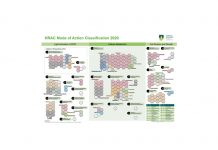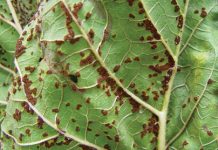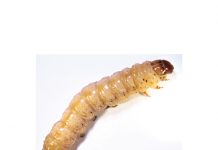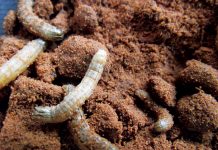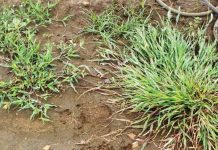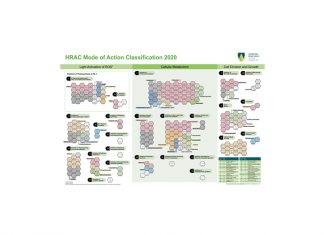
Tarekegn Terefe,
ARC-Small Grain,
Bethlehem

Nokulunga Mzimela,
ARC-Small Grain,
Bethlehem

Kelly Breeds,
CenGen (Pty) Ltd

Renée Prins,
CenGen (Pty) Ltd
Ramularia leaf spot (RLS), caused by the fungus Ramularia collo-cygni (Rcc), was identified for the first time in South Africa in 2015. This important barley disease has also been reported in different European and South American countries. RLS, which is transmitted through infected seeds, can have a negative impact on malt quality and grading, and may cause yield losses of up to 35%.
The symptoms of RLS appear primarily on the leaves, as small, dark-brown, rectangular spots surrounded by yellowish haloes (Photo 1). These spots are about 1 mm to 2 mm long and 0,5 mm to 0,7 mm wide, and develop between leaf veins. The spots may gradually coalesce to form larger necrotic areas. Under controlled environments, RLS symptoms can be visible in just seven days after inoculation, but in the field the symptoms are normally observed after ear emergence. Increased duration of leaf wetness favours Rcc spore germination and infection. Light intensity also affects the level of pathogenicity and occurrence of symptoms on barley leaves. The fungus that causes RLS can survive as a saprophyte on dead lower leaves of barley. It can also colonise the barley plants as an endophyte without showing any symptoms of infection.
No further investigation has been conducted on RLS in South Africa since its initial detection in the Western Cape five years ago. However, RLS can spread within and outside the Western Cape barley-growing regions, possibly leading to large-scale outbreaks and economic loss. Therefore, surveys were conducted during the 2018 and 2019 seasons to determine the occurrence and distribution of this disease in the country. The major barley-growing regions surveyed included the Western Cape, Northern Cape, North West and Limpopo (Figure 1). Within each production area, barley fields were randomly checked for the presence of RLS-type symptoms. When RLS infections were suspected, symptomatic leaves were collected and tested for the presence of Rcc using DNA analysis at CenGen in Worcester. CenGen utilised a published method with a high level of sensitivity for this work.
Survey results
Barley plants exhibiting low levels of RLS-type infection were observed in different producers’ fields surveyed during 2018. Almost all the fields where symptoms were found were in the Western Cape, except for one field observed in the North West Province. Of the 52 barley fields visited, RLS-type symptoms were observed in only 21 fields (20 in the Western Cape and one in North West).
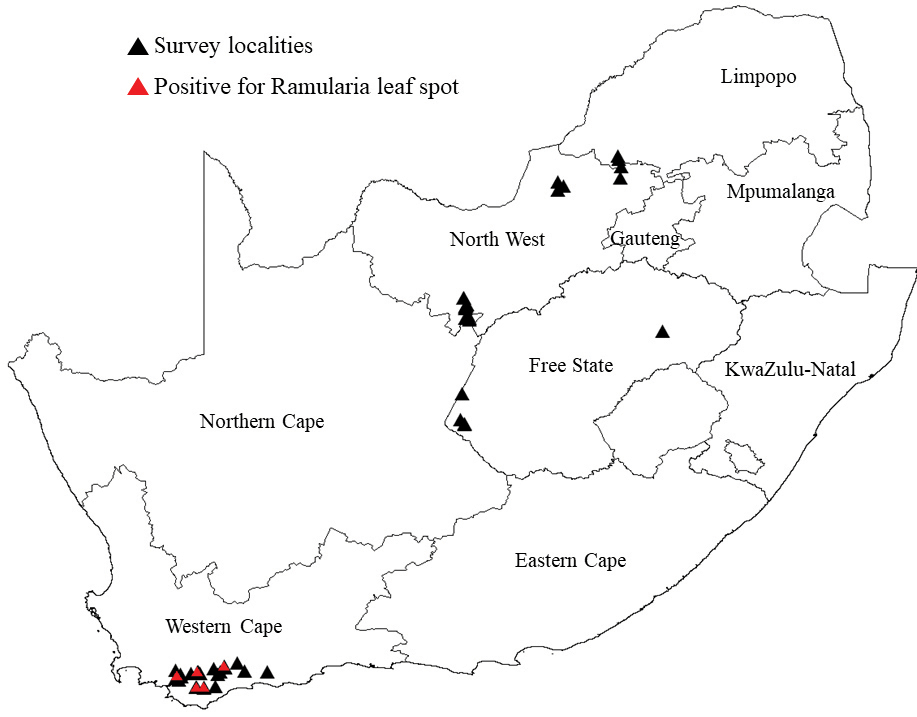
Only trace levels (less than 1% severity) of RLS-type spots were observed in most of the localities, except at four barley fields (Swellendam, Sandkraal, Bredasdorp and Roodebloem) where 2% to 10% severities were found. No RLS-type symptoms were found in any of the fields surveyed in the Northern Cape, Limpopo and Free State. Out of 21 symptomatic samples collected, 18 were tested for the presence of Rcc using relevant DNA analysis. Rcc was found in five (28%) of the samples. The results revealed the presence of RLS in samples collected from Napier, Riviersonderend, Roodebloem, Swellendam and Bredasdorp (Figure 1).
During the 2019 season, two experimental plots in the Free State (Bethlehem) and over 50 producers’ fields in different barley-growing areas of the Western Cape were surveyed. Over 35 samples were tested for the presence of Rcc. However, none of these samples tested positive for the disease, suggesting that the fields where the samples were collected were not infected with RLS. The absence of RLS in the fields surveyed in 2019 was probably due to the occurrence of unfavourable weather conditions for RLS infection. Several localities in the Western Cape experienced relatively drier conditions in the 2019 season, especially after the barley plants flowered and when RLS infection was expected to occur. Moisture and temperature are key factors affecting RLS development, whereby extended leaf wetness duration and high rainfall increase RLS severity.
The majority of samples collected in 2019 (and suspected of infection with RLS) were found to be infected with the spot form of net blotch (SFNB), while a few samples had the net form of net blotch. This indicates that net blotch, especially SFNB, causes symptoms that are similar to those caused by RLS. It has been reported that RLS symptoms are commonly mistaken for foliar diseases caused by other fungi and physiologically induced spots resulting from environmental factors such as increased radiation.
Other barley diseases noted during the surveys included net blotch, scald, leaf rust, bacterial leaf streak, barley yellow dwarf virus and powdery mildew. Barley net blotch was the most common disease as it was found in over 90% of the producers’ fields surveyed in the Western Cape during 2019. Similarly, widespread occurrence of this disease was also noted in the province in 2018. Greater than 20% net blotch severity was recorded in localities such as Bredasdorp, Roodebloem, Klipdale and Napier, and a high severity of 70% and 90% was recorded in two fields at Caledon and Voorstekop, respectively (Photo 2).
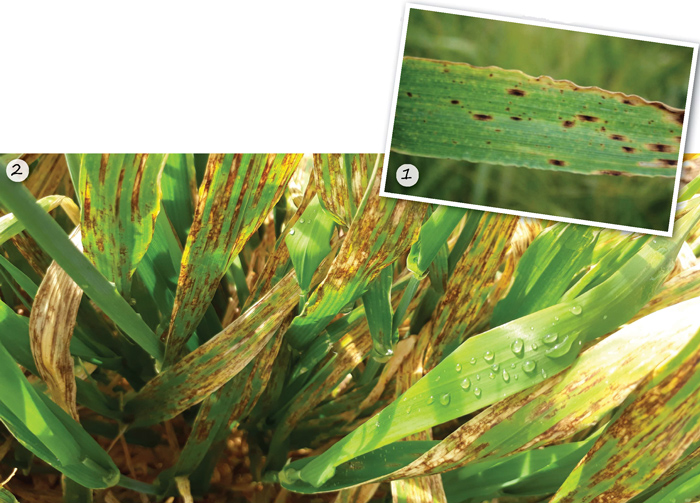
Photo: www.agricentre.basf.co.uk
2. Barley plants severely infected by net blotch at one of the producer’s fields at Voorstekop during mid-August 2019.
Conclusion
The results of field observations and molecular tests combined confirmed the occurrence of RLS in producers’ fields in the Western Cape, although only trace levels were observed in most of the fields. The disease appears to be more important in the barley-growing areas of this province. This can largely be attributed to the general prevalence of favourable weather conditions for disease development in this region. The observed low severity suggests that RLS may not at present pose a significant threat to local barley production. However, this disease could increase in severity and cause economic loss when weather conditions are suitable and susceptible cultivars are widely cultivated. Therefore, it is important to research and develop RLS control measures in order to mitigate the potential negative impact of this disease on the yield and quality of barley. Furthermore, the results of surveys conducted during the two seasons suggest that net blotch is the most important barley disease in the Western Cape.



